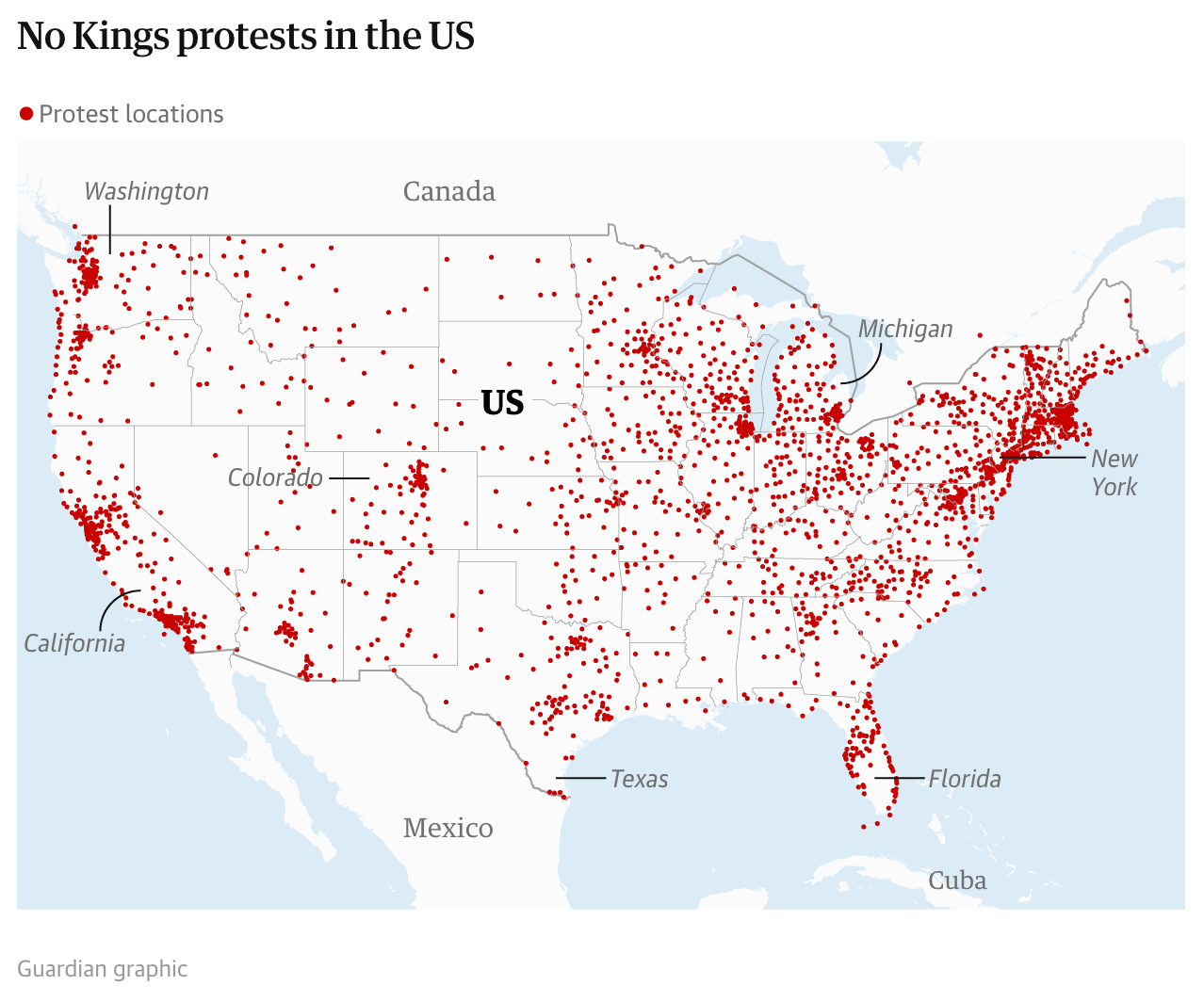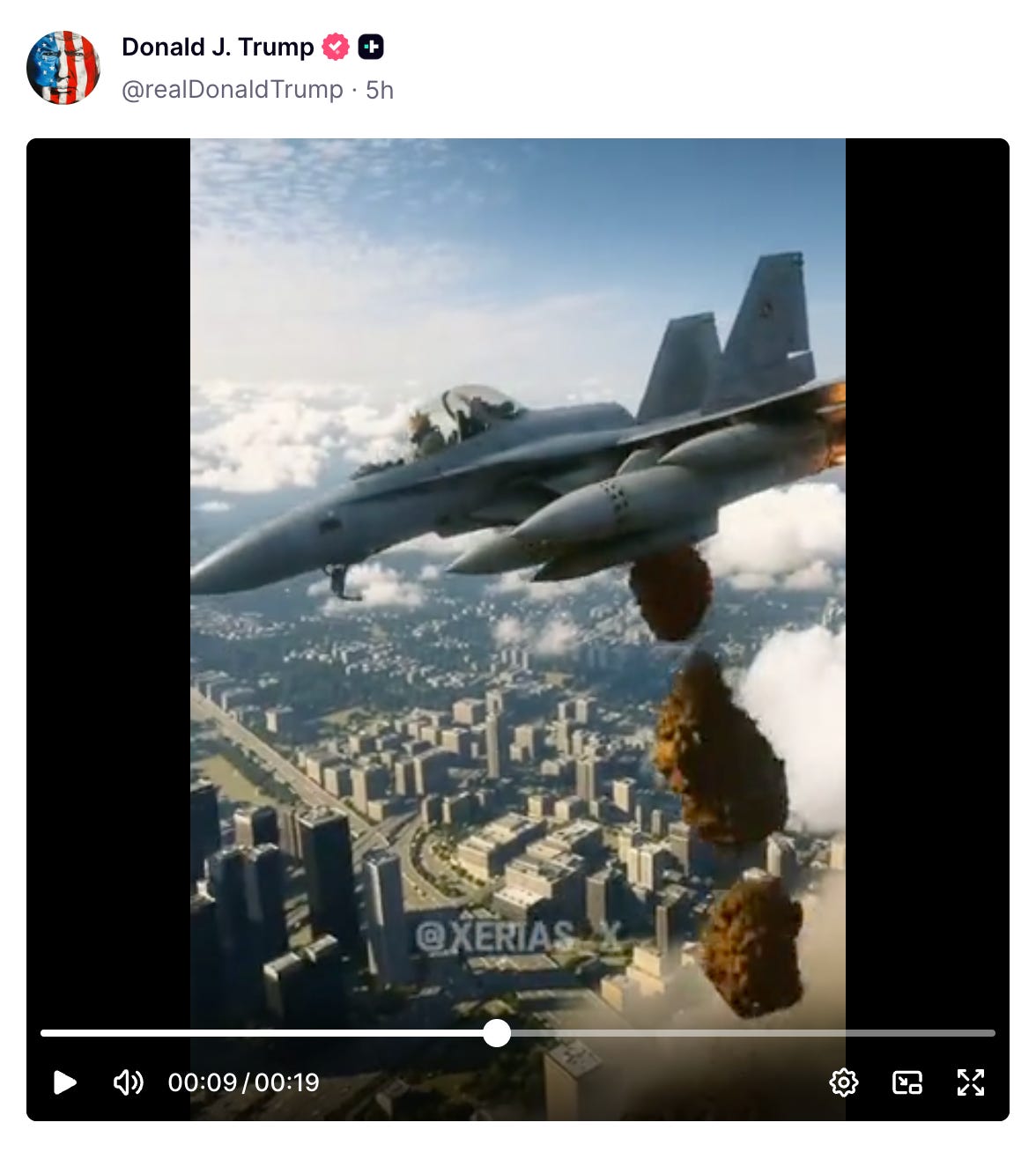Why "No Kings Day" Was a Test of America's Political Stability
It may have been the largest single-day protest in American history
More than seven million people filled streets, parks, and city squares across all 50 states for the second “No Kings Day.” Los Angeles had the biggest single turnout — hundreds of thousands in yellow shirts stretching from Pershing Square to City Hall.
And here’s what’s remarkable: as of this writing, for all that size and passion, it stayed peaceful. In L.A., there was some rowdiness late in the evening, but nothing major.
A show of force
There was a strange moment here on the West Coast. While the rallies were underway, the military staged live-fire exercises near Camp Pendleton, forcing a shutdown of a long stretch of the 5 Freeway. Gridlock followed for miles.
Governor Newsom said there was no coordination with the White House and accused the administration of turning a routine drill into political theater. He called it an “absurd show of force” and “reckless.” The timing — right as millions protested against authoritarianism — made that hard to ignore.
City by city
Los Angeles: hundreds of thousands. Some minor scuffles, a few arrests, but mostly singing and chanting.
New York City: around 50,000, stretching from Times Square to Union Square.
Chicago: roughly 100,000 filled Grant Park.
Houston: about 15,000 downtown.
Smaller towns like Alton, Illinois, drew hundreds. Even that was enough to fill city centers.
Overseas: solidarity marches in London, Berlin, and Toronto under banners reading “No tyrants” and “No kings.”
Some red-state governors wanted to flex their muscles. In Texas, Florida, and Oklahoma, police and National Guard deployments were heavy. Most of it stopped short of intimidation, though a few crowds said the armored vehicles and overhead helicopters felt like warning shots.
Still — no mass violence. No chaos.
The talking points
The Trump administration and its media allies tried to brand the rallies as “hate-America protests.” The coordinated slogan went out in unison across right-wing outlets: un-American, anti-Christian, disloyal.
That’s an odd way to frame demonstrations that borrow the main idea from the Declaration of Independence. The Boston Tea Party was really the first No Kings rally. “We have no kings” has been the point since 1776.
The response? White House spokeswoman Abigail Jackson responded with “Who cares?” when asked about the “No Kings” protests.
And President Trump posted a video Saturday evening showing himself flying a fighter jet with “King Trump” on the side, dumping raw sewage on protesters exercising their free speech rights.
The roots of the movement
The No Kings movement began as part of the 50501 Coalition — “50 states, 50 protests, one movement.” It grew out of alliances between Indivisible, the ACLU, and local grassroots groups.
The first big action was back in June, when four to six million people rallied in two thousand cities. This weekend’s numbers blew that away.
Yellow became the unifying color, meant to symbolize both warning and unity. American flags were everywhere; some waved upside-down as a distress signal.
What this means
When millions of citizens rally peacefully across every state, that’s not just a protest. It’s a stress test of the system.
Can a democracy absorb that kind of dissent without breaking?
So far — yes. Police restraint mostly held. State and federal tensions flared but didn’t explode.
But the next question is the bigger one: does this stay a one-day event, or is it the start of something larger?
This is the second massive wave of No Kings protests this year. The organization, messaging, and turnout all point to a movement that’s not fading away anytime soon.
History tells us that sustained, disciplined protest can move nations — if the energy doesn’t burn out first.
What happens next
If you were running this movement, what would your plan B be once the headlines fade?
Do you build local chapters that keep working year-round?
Do you shift to policy fights at the state level?
Do you find ways to protest that don’t depend on mass turnout?
Vote in the poll below — Fizzle / Escalate / Broaden. I’ll post results next week.
No Kings Day may turn out to be the most important civics lesson in modern America.
It’s not about overthrowing power. It’s about reminding it where it came from.




